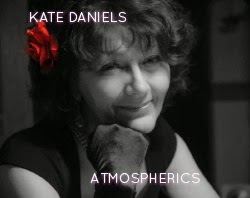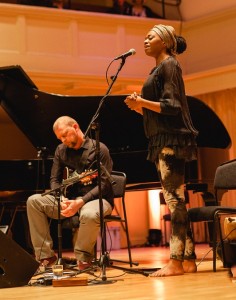Search
Latest tweets
Latest tweets
- No public Twitter messages.
Jazz Journal
Posted in: Copywriting, Jazz Journal by Sally Evans-Darby on 22 October 2012
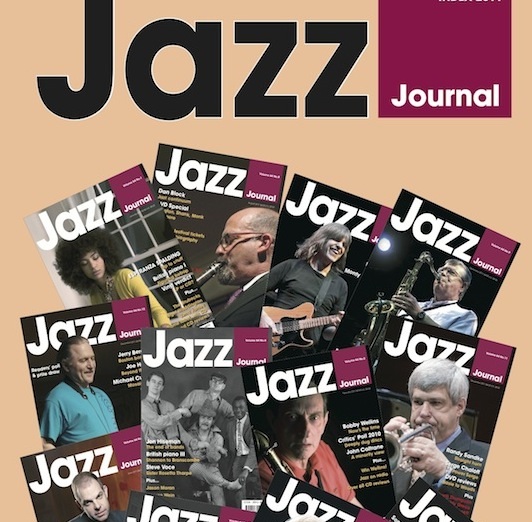
I write album, book and live reviews for national jazz magazine, Jazz Journal. I’m a big jazz fan, and can sometimes be heard warbling the old jazz standards myself, so it’s a delight to be able to write about the newest releases in the jazz world.
For those interested in jazz, or in writing about music, or for those who just fancy a short diversion while visiting my website, you can read my full back catalogue of reviews below. More reviews will be added as they are published in Jazz Journal.
Marlene VerPlanck at Crazy Coqs, London, March 2014
Shirley Horn: Live At The Gaslight Square + Loads Of Love
Laura Zakian: Songs For Modern Lovers
Mimi Terris: They Say It’s Spring
Lauren Kinhan: Circle In A Square
Jolie Goodnight: Say Goodnight Gracey
Gabrielle Ducomble: Notes From Paris
Kate Daniels: Atmospherics
Hugh Masekela & Larry Willis, St George’s Bristol, November 2013
Gibraltar Jazz Festival, October 2013
Stacey Kent: The Changing Lights
Jacqui Dankworth: Live To Love
Book review: Late Life Jazz – The Life And Career of Rosemary Clooney
Harry Connick, Jr.: Every Man Should Know
Ella Fitzgerald: Live In Stockholm 1957
Laura Ainsworth: Necessary Evil
Tossia Corman: Up The Hills
Caro Josée: Turning Point
Cathrine Legardh: Love Still Wears A Smile
Susanne Abbuehl: The Gift
Carmen McRae: Sings Lover Man/Sings Dave Brubeck’s Compositions
Billie Poole: Sermonette/Confessin’ The Blues
Joanie Sommers: Positively The Most!/The “Voice Of The Sixties”/For Those Who Think Young
Jana Herzen: Passion Of A Lonely Heart
Nina Simone: Empress Live!
Johnny Mercer: Music Shop IV
Johnny Mercer: Music Shop III
Book review: Benny Goodman’s Famous 1938 Carnegie Hall Jazz Concert
Duke Ellington: Ellington Jazz Party
Kendra Lou: To The End Of The World
Chris McNulty: The Song That Sings You Here
Marlene VerPlanck at Ronnie Scott’s, March 2013
George Shearing: On The Sunny Side Of The Strip + On Stage
Lovely Rita: Strollin’ Along Abbey Road
Ella Fitzgerald: Wishes You A Swinging Christmas
Rachael MacFarlane: Hayley Sings
Heather Cairncross: At Last
Elizabeth Shepherd: Rewind
Ella Fitzgerald & Louis Armstrong: Porgy & Bess
Ernestine Anderson: The Complete 1947-1958
Rodriguez at the London Jazz Festival 2012
Dee Dee Bridgewater at the London Jazz Festival 2012
Susie Arioli: All The Way
Ella Fitzgerald: Sings Ballads For Lovers
Beverley Beirne: Seasons Of Love
Erena Terakubo: New York Attitude
Ira Kaspi: You And The Night And The Music
Sophie Milman: In The Moonlight
Sandra Marlowe: True Blue
Stephanie Nakasian: Show Me The Way To Get Out Of This World
Barbara Lea: A Woman In Love
Bing Crosby: The Jazz Sides
Rosemary Clooney: The Buddy Cole and Nelson Riddle Sessions
Peggy Lee: Blues Cross Country/If You Go
Etta Jones: Don’t Go To Strangers/Something Nice
Chet Baker Quintet: Conservatorio Cherubini
Tierney Sutton Band: American Road
Marlene VerPlanck at Crazy Coqs, London, March 2014
 After enjoying a happy afternoon at one of Marlene VerPlanck’s lunchtime concerts at Ronnie’s last year, I was keen to catch her again on her annual sojourn in the UK. This time she was making her debut at Crazy Coqs, a new cabaret spot beneath Piccadilly Circus currently boasting an impressive programme of classy performers, including Christine Bovill and Claire Martin. The circular art deco cabaret room itself sports an impressive mirror ceiling that belies the room’s modest size, and tables and chairs are arranged fan-like around the small red-curtained stage, with even the furthest seat against the back wall feeling up-close and personal. Walking into the venue is an uncannily transportive experience; you are immediately plunged into another era.
After enjoying a happy afternoon at one of Marlene VerPlanck’s lunchtime concerts at Ronnie’s last year, I was keen to catch her again on her annual sojourn in the UK. This time she was making her debut at Crazy Coqs, a new cabaret spot beneath Piccadilly Circus currently boasting an impressive programme of classy performers, including Christine Bovill and Claire Martin. The circular art deco cabaret room itself sports an impressive mirror ceiling that belies the room’s modest size, and tables and chairs are arranged fan-like around the small red-curtained stage, with even the furthest seat against the back wall feeling up-close and personal. Walking into the venue is an uncannily transportive experience; you are immediately plunged into another era.
Such transportive qualities are the ideal setting for Ms VerPlanck’s music, which with its themes of longing and wistfulness invites the listener to reminisce about times gone by (particularly her melancholic reading of Jack Segal’s noir ballad I Keep Going Back To Joe’s) – but Ms VerPlanck’s communicative powers go far beyond mere nostalgia. For one thing, her delivery is anchored firmly in the present: each song has an immediacy about it, as if its sentiments have occurred to her in the moment, while her two excellent accompanists (John Pearce, piano and Paul Morgan, bass) follow her lead.
The set began with an uptempo rendition of They Say It’s Spring, with Ms VerPlanck launching spiritedly into the spritely lyric (“this feeling light as a feather…”). Her flights of impeccable glissandi bridge tonally precise phrasing, with Morgan chasing the lyric good-naturedly on bass. A few of these livelier numbers add dashes of playfulness to the otherwise mostly ballad-dominant programme, particularly Ms VerPlanck’s a cappella intro and later scat break on Nobody Else But Me and the racing pace at which all three musicians hurtle through The Best Thing For You. Most of the songs here, however, are from Ms VerPlanck’s latest record, her 22nd solo release, Ballads…Mostly. And it is in these ballads that she and her band really have space to move their audience.
Close Your Eyes may have featured in Ms VerPlanck’s set at Ronnie’s last year too, but she has a knack for singing a song with a different story every time. Lyrics that in other singers’ hands seem throwaway, like “It’s love’s holiday”, are suddenly invested with new meaning; or at least you feel that Ms VerPlanck knows something about this lyric that has until now passed you by. This occurs again and again in Ms VerPlanck’s songs: every word is delivered so feelingly that it is impossible not to be enchanted by her.
On the solo breaks Ms VerPlanck’s crisp, warm voice shimmers in the silence, and thrilling cadenzas put the finishing touch on many of the numbers. Happily, she’s still not afraid to reach for the high notes, notably on Billy VerPlanck’s inventive intro and coda arrangement on Witchcraft (which also features on her new album). John Pearce’s piano solos are another highlight, with his cascading, tumultuous turns on the keys wholly absorbing the ever-appreciative audience.
There’s a universality about Ms VerPlanck’s songs, expressed aptly in I Keep Going Back To Joe’s; “this has probably happened at least once in everyone’s life”, she observes wryly in introducing the song. Not everyone may have mourned a lost love, yet Ms VerPlanck’s storytelling is so emotionally engaging that only the hardest heart would fail to identify with the brooding lyric.
When too soon Ms VerPlanck introduced her final song, with some audible dismay from the audience, it was with a circular flourish that she returned to the theme of optimistic springtime with Rodgers’ and Hammerstein’s It Might As Well Be Spring. The concluding notes summed up Ms VerPlanck’s performance: full of grace, warmth and charm. Her UK tour continues until 4 April, but she is sure to be back again next spring with more concerts that are simply a pleasure.
Shirley Horn: Live At The Gaslight Square + Loads Of Love
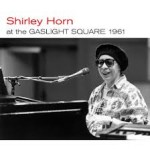 Singer Shirley Horn was a pianist first and considered that her true medium, only falling into vocals by accident when asked to sing My Melancholy Baby at a restaurant in exchange for a teddy bear when she was 17. Good thing she agreed, because as these tracks show she was something of a vocal connoisseur, using her classically trained ear to plumb the depths of a song to great effect.
Singer Shirley Horn was a pianist first and considered that her true medium, only falling into vocals by accident when asked to sing My Melancholy Baby at a restaurant in exchange for a teddy bear when she was 17. Good thing she agreed, because as these tracks show she was something of a vocal connoisseur, using her classically trained ear to plumb the depths of a song to great effect.
This first set at St. Louis’ Gaslight Square comprises eight rather rare takes originally thought to have been recorded at the Village Vanguard. Here Horn’s vocal is quiet, deliberate, with flashes of Rachmaninov in her virtuosic piano. Making up the second half of the CD is her 1962 album Loads Of Love, with a much fuller sound courtesy of the Jimmy Jones Orchestra. Horn’s vocal here is classy, full of conviction; the half-whispered entreaty to “come and get it” on Do It Again is enough to tingle any spine. For good measure there are also three bonus tracks from a session she recorded with Stuff Smith in 1959.
Horn was critically acclaimed in her lifetime and a great favourite of Miles Davis’, though never achieving similar commercial success; she was quoted as saying she would “not stoop to conquer” when faced with the possibility of transitioning into more popular singing in the 1960s. She was clearly a principled and consummate performer, and these tracks are an excellent overview of her talents for fans and newbies alike.
Laura Zakian: Songs For Modern Lovers
 Laura Zakian’s fourth studio album is an ambitious attempt to marry the two often uneasy bedfellows of jazz and pop. With the aim of updating Sinatra’s Songs For Swinging Lovers by recasting standards from that album with new arrangements of what might be called “modern classics”, Zakian’s Songs For Modern Lovers sees, for example, Our Love Is Here To Stay sitting incongruously alongside Sam Brown’s 80s hit Stop.
Laura Zakian’s fourth studio album is an ambitious attempt to marry the two often uneasy bedfellows of jazz and pop. With the aim of updating Sinatra’s Songs For Swinging Lovers by recasting standards from that album with new arrangements of what might be called “modern classics”, Zakian’s Songs For Modern Lovers sees, for example, Our Love Is Here To Stay sitting incongruously alongside Sam Brown’s 80s hit Stop.
Zakian’s voice itself is worth listening to; her delivery is deliciously silky-smooth and her mellifluous vibrato employed to good effect. The standards from Frank’s original line-up here are unquestionably the superior tracks, with Makin’ Whoopee made gloriously funky and some downright swinging on Love Is Here To Stay. The inclusion of the lesser-known verse on Anything Goes is a pleasure to hear, though it’s a little overwrought.
An unorthodox track listing is certainly nothing to take issue with if the songs themselves hold water, but I can’t help wondering what jazz value can be found in rehashing Chicago’s weepy If You Leave Me Now with a slightly jazz-friendlier arrangement. The pop inclusions’ well-trodden melodies weigh her otherwise spritely voice down, and I’m not sure she breathes much new life into them.
Mimi Terris: They Say It’s Spring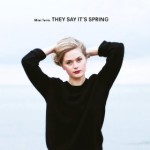
Swedish-American singer Terris conjures up a fresh, invigorating sound on these 10 tracks. Her classical training is clear in her impeccable diction and impressive range. Terris has a mature, sonorous voice and charmingly gamine delivery, perfect for the softly swinging opener They Say It’s Spring. Jacob Fischer also features on guitar.
Lauren Kinhan: Circle In A Square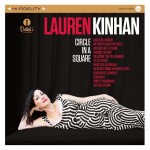
Kinhan’s third album release shows her as a vocal tour de force; her songwriting abilities are here also given the limelight, with all the tracks written or co-written by her. These twisting, unpredictable tunes seem to offer up more on each repeat listen, with Kinhan’s supple voice running at full pelt through a broad musical palette. She’s a fan of Joni Mitchell and her influence can be heard in her effortless slides between octaves. Pinpoint vocal precision is complemented well by Randy Brecker guesting on trumpet in the title track.
Jolie Goodnight: Say Goodnight Gracey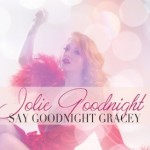
This debut album from Austinite vocalist Jolie Goodnight is as sugary and fluffy as its lavishly pink cover suggests. Daughter of Texan music producer Joe Gracey, Goodnight presents a good selection of standards including blues and ballads, the latter being her strength – her vocal is a little too cutesy on Basin Street Blues, but a flowery vibrato reminiscent of Marilyn Monroe makes numbers like These Foolish Things as melt-in-your-mouth as candyfloss.
Gabrielle Ducomble: Notes From Paris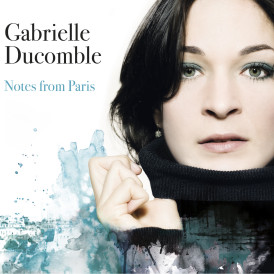
Belgian by birth but based in London, Ducomble was a finalist on a reality TV show before turning her attention to her current forte. On this album she sings mostly in French, with a few forays into English including the refrain to I Will Wait For You (a contrast that works to great effect). Several Edith Piaf stalwarts are ambitiously reworked, such as La Vie En Rose which is given a syncopated, tumbling drumbeat. Ducomble’s gentle, flirting vibrato and velvety tone make for very easy listening, and flickers of accordion throughout keep things firmly, and happily, Parisian.
Kate Daniels: Atmospherics
A dark, moody album of unexpected revelations. All the arrangements bar Witchcraft are Daniels’: standards spun out slowly over fraught,
fragile vocals and insouciant muted trumpet, or “jazz noir”, as Daniels dubs it. An unusual and slightly uneasy reading of Angel Eyes is a highlight; a girlish, Björkish verse precedes the husky refrain that strays a little into melodrama. John Etheridge and Alec Dankworth also feature in the line-up.
Hugh Masekela & Larry Willis, St George’s Bristol, November 2013
I was one of the lucky few to catch this duo at the intimate venue of St George’s Bristol on 14 November, the concert part of a UK tour which included the London Jazz Festival. Horn player Masekela from Alexandra, South Africa and pianist Willis from Harlem, USA have been playing together since they met in New York 53 years ago, with the perfect symbiosis of their sound and amiable jibes between songs a clear testament to that long friendship.
Before they took the stage, however, support from Tottenham-born Zena Edwards entertained the audience for an absorbing 45 minutes. Describing herself as “a straight-up storyteller”, Edwards used a mixture of poetry, rap and song to explore a broad palette of musical colours, drawing on traditional South African folk songs, singing in Zulu, and playing African instruments such as the kora and the kalimba with prodigious skill. Backed by Jon Speedy on guitar, an extended lullaby played by Edwards on the kora was particularly mesmerising.
Edwards’ entertaining vocal play and African-influenced sound was an ideal prelude to the main event, which drew from similar themes. Masekela and Willis took to the stage for the second act and bowed to a standing ovation before they played a single note. They then launched into a multi-layered, textured set that saw Masekela switching seamlessly from flugelhorn to cornet to vocals then back to flugelhorn, accompanying Willis’ extended, lavish piano lines with percussion ranging from cowbell to tambourine. The two players sang soft, haunting harmony refrains that somehow created a sound much larger than only two voices, easily filling the concert hall.
The set was advertised as “leaning heavily on the Great American Songbook”, and the few standards performed by the pair amongst the more traditional African sounds were clearly carefully chosen. Easy Living in particular
was a joy, with Masekela’s staccato horn peppering Willis’ laidback piano. Masekela introduced the song by placing it in context: the New York of 1960 where he and Willis had met and the jazz clubs the two of them frequented as students of the Manhattan School of Music (“a dime to get in; 45 cents for a beer”, as Masekela recalled). They had seen and learned from many of the great jazz players of the time, from Duke Ellington to Cannonball Adderley, but Billie Holiday and Clifford Brown were two they were unlucky enough to miss by a few years, with Holiday dying in 1959 and Brown in 1956. Easy Living, then, was a touching tribute to them.
These first-hand recollections of a time that fascinates many jazz fans, myself included, were recounted with great warmth and levity by Masekela, who proved to be a charismatic storyteller. Descriptions of Fats Waller’s woma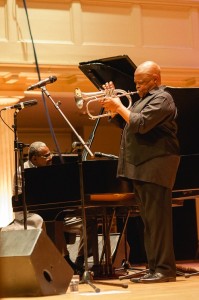 nising led to a touching rendition of Until The Real Thing Comes Along (with Masekela jokingly calling Ain’t Misbehavin’ simply “an outright lie” by Waller). There was also a very tender reading of You Make Me Feel Brand New and a measured, mellow interpretation of Hoagy Carmichael’s Rockin’ Chair, with Masekela singing the lyric and Willis delivering a dream-like, Gershwin-esque piano solo.
nising led to a touching rendition of Until The Real Thing Comes Along (with Masekela jokingly calling Ain’t Misbehavin’ simply “an outright lie” by Waller). There was also a very tender reading of You Make Me Feel Brand New and a measured, mellow interpretation of Hoagy Carmichael’s Rockin’ Chair, with Masekela singing the lyric and Willis delivering a dream-like, Gershwin-esque piano solo.
The final performance was Masekela’s 1968 number 1, Grazing In The Grass, with the audience needing little encouragement to get up on their feet. “If you remember this, you must be old,” Masekela quipped. Raucous applause followed the song’s final note, with the duo quickly persuaded back on stage for an encore. An African-influenced version of Nobody Knows You (When You’re Down And Out) segued neatly into a lullaby to close the evening: When It’s Sleepytime Down South, the lyric sung in hushed tones by Masekela.
Throughout the set, the highly attentive audience maintained their initial reverence for the two players, and it’s easy to see why they garner such respect. Although they have been playing since the 1950s, the pair are more than a relic of a bygone time. They are evidence of jazz’s capacity to constantly renew itself, their fluid riffing and sometimes surprising turns in the music rendering their sound as fresh as it must have been in 1960. Masekela celebrates his 75th birthday next March at the Walt Disney Concert Hall, Los Angeles, but hopefully he and Willis will be back in the UK before long for more of the same understated yet enchanting duets.
Gibraltar Jazz Festival, October 2013
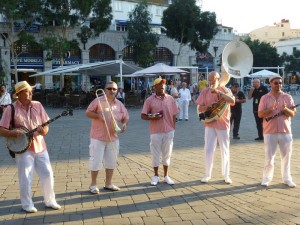 At the southern tip of Spain and marking the mouth of the Mediterranean, the bustling peninsula of Gibraltar makes for an idyllic setting for a jazz festival. Taking place in balmy mid-October, the Gibraltar International Jazz Festival celebrates the wealth of musical talent native to the peninsula as well as jazz artists from far and wide, with this year’s billing including headliner Jools Holland, Gibraltarian guitarist Elie Massias and Valencian vibraphonist Arturo Serra.
At the southern tip of Spain and marking the mouth of the Mediterranean, the bustling peninsula of Gibraltar makes for an idyllic setting for a jazz festival. Taking place in balmy mid-October, the Gibraltar International Jazz Festival celebrates the wealth of musical talent native to the peninsula as well as jazz artists from far and wide, with this year’s billing including headliner Jools Holland, Gibraltarian guitarist Elie Massias and Valencian vibraphonist Arturo Serra.
After a manifesto commitment in Gibraltar’s 2011 General Election for an annual jazz event, and the success of last year’s inaugural programme which featured Avishai Cohen, the fledgling festival returned this October for its second year. Nightly concerts over three days took place at the Queen’s Cinema near the centre of the town, heralded as the sun went down by the New Orleans Jump Band. These five musicians (Mike Izatt – banjo, Andy Peacock – trombone, Jonas Molbeck – sousaphone, Leonardo La Peruta – clarinet and Mitch Jansen – trumpet and vocals) marched through the Gibraltar streets on each of the three evenings, performing their unique blend of jump jazz and Dixie and entertaining the crowds in the town square.
The festival was then officially opened on the night of 17 October by its driving organiser, local jazz bassist George Posso. Posso has been putting on regular jazz nights in the town for the last 13 years and promoting the music in local schools and societies. He kicked off the first concert at the Queen’s Cinema with some of his regular bandmates, including three local vocalists.
Next up was Gibraltar-native but New York-resident Elie Massias, whose renown on the Rock was clear; though the first night’s audience were a little thin on the ground, their loud applause belied their numbers. Performing all original compositions with his quintet, Massias started quiet and slow with a Latin beat and a colourful guitar solo before segueing into an abstract soundscape, featuring Jewish-influenced vocalese and soprano sax; a dark, syncopated piece with a plaintive refrain. The well-received set ended with guest Dan Moretti on saxophone in an upbeat performance of Rollins’ Tenor Madness.
Closing the first night was Seville-born pianist Juan Galiardo with his quartet, which included special guest Arturo Serra on vibes. Performing to a hushed and revering audience, the florid, lavish sound of the vibraphone filled the dark cinema, with Serra playing variously with furious, full-bodied attack and soft, lullaby-like harmonics. The last song was dedicated to a student of Galiardo’s, before the final flourish of notes was struck to mark the end of the first night of festivities.
Kirsty Almeida opened the second night with her band The Troubadours (Tom Davies – guitar, John Ellis – piano, Matt Owens – bass, Bryan Hargreaves – drums). Born in Gibraltar but currently living in Manchester, Kirsty swept onto the stage in a billowing white dress and performed an entertaining set of ska, country and jazz.
A dressmaker and guitarist as well as a vocalist, Kirsty and her band interacted warmly with the audience, leading a good-humoured call and response piece (“that guy wasn’t singing, let’s try that again” put in Davies after the first attempt). Slide guitar and honky-tonk piano rubbed shoulders with calypso and the nursery rhyme-like Lucy The Ladybird (“gentle jazz for children”, as Kirsty described it). Those looking for a little more jazz content may have been left wanting if it wasn’t for a rather moving version of the Mercer standard When A Woman Loves A Man, sung by Kirsty alone on stage accompanying herself on guitar.
Kirsty and her Troubadours were applauded back on stage for an encore by the clearly appreciative audience, and after a short interval the Dan Moretti Band were up next to perform a late-night set of funk-flavoured jazz. Saxophonist Moretti, a Professor at the Berklee College of Music in Boston, has been playing tenor sax since he was 12. A highlight of his thoughtful and varied set was one of his own compositions, Monk’s Walk, played with plenty of conviction on soprano sax.
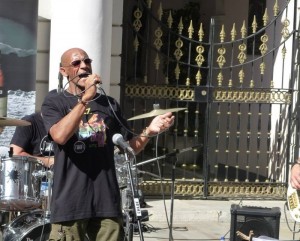 The third day of the festival saw soaring temperatures in Gibraltar and one of the standout performances of the programme, which took place on a small crowded street thronging with Saturday shoppers: a free open-air two-hour concert by jump blues and groove outfit Soul Mates, led by the charismatic and highly entertaining Mitch Jansen from Holland on trumpet and vocals (who also featured daily in the New Orleans Jump Band).
The third day of the festival saw soaring temperatures in Gibraltar and one of the standout performances of the programme, which took place on a small crowded street thronging with Saturday shoppers: a free open-air two-hour concert by jump blues and groove outfit Soul Mates, led by the charismatic and highly entertaining Mitch Jansen from Holland on trumpet and vocals (who also featured daily in the New Orleans Jump Band).
The band, comprising an explosive brass section, funky bass and plenty of boogie-woogie attitude from UK-based Craig Philbin on piano, whipped up a festival atmosphere with passers-by stopping to dance, clap and otherwise join in the fun. As well as Jansen’s outstanding performances (Flip, Flop and Fly and other Blues Brothers perennials in particular) and crowd-pleasing antics (throwing his trumpet high in the air and only just catching it at the end of one song), the set also featured local schoolgirl Chloe Martinez, whose bold, brassy rendition of At Last gave Etta James a run for her money.
This spirit of uninhibited, democratic fun is a key element of a successful jazz festival, serving to create an atmosphere over the course of the programme that supplements the ticketed events. As this particular festival is planned to become an annual event, it’s hoped that essential fringe music such as this will be featured more widely in the coming years.
The sold-out headline event closing the festival on Saturday night was Jools Holland and his Rhythm & Blues Orchestra, who were joined by two of Holland’s regular vocalists Ruby Turner and Louise Marshall, and, rather incongruously, ex-Spice Girl Melanie C. The concert saw the Queen’s Cinema packed to capacity with revellers needing little encouragement to get up and dance in the aisles. It was a swaggering, raucous affair with Holland leading the band with his characteristic piano boogie-woogie, a riotous brass section and plenty of call and response pieces to get the lively audience involved.
Though Melanie C was clearly billed as the principal vocalist of the night (and indeed was announced to the stage to elaborate fanfare), Louise Marshall stole the show for me. She performed a sultry, swinging reading of Holland/Brown-penned ballad Valentine Moon, and a driving gospel version of Accentuate The Positive, her voice flecked with flavours of Aretha Franklin. I could have listened to her much longer but others were soon vying for the spotlight; not least Melanie C, whose over-ambitious handling of songs like Nina Simone’s I Got Life only accentuated her pop-star rather than jazz-star credentials. Nevertheless, her presence at the festival went down a treat with the audience.
Former Squeeze drummer and long-time Jools Holland bandmate Gilson Lavis backed the orchestra throughout the night, and was in fine form; at one point all the musicians left the stage as he threw himself into a particularly epic and energetic solo. Another Jools Holland regular, vocalist Ruby Turner, then took the stage to animated applause, and with her commanding voice performed an entertaining melee of gospel, blues and spirituals. At the close of the show the feverish audience demanded an encore, which they were duly given; the entire house sang along to a Sigman/Magidson number enjoying a recent renaissance, Enjoy Yourself.
For an event only in its second year, the jazz festival in Gibraltar is clearly already gathering pace and attracting the attention of a spectrum of musicians and audiences. The trend for jazz festivals, European ones at least, seems to be heading more towards popular acts than hard-core jazz, and this appears to apply to Gibraltar too judging from the emphasis given to pop over the jazzier elements of the programme (viz. first-night performer Arturo Serra and the Soul Mates’ fringe event). Nevertheless, this year’s festival certainly went off with a bang and had a good number of locals and internationals enthusiastically engaged with the music on offer, which can only be a good thing. Here’s to another dynamic festival on the Rock in 2014.
Stacey Kent: The Changing Lights
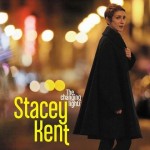 There’s something mesmerising about Stacey Kent’s voice; her immaculate diction, highly polished tone and impeccable timing make you sit up and take notice. Sometimes her vocal is perhaps a little too perfect; some may feel its flawlessness lacks warmth. Undeniably, though, Kent possesses an instrument of precision and élan that make her a formidable artist.
There’s something mesmerising about Stacey Kent’s voice; her immaculate diction, highly polished tone and impeccable timing make you sit up and take notice. Sometimes her vocal is perhaps a little too perfect; some may feel its flawlessness lacks warmth. Undeniably, though, Kent possesses an instrument of precision and élan that make her a formidable artist.
This latest album focuses mostly on Latin tunes, with polyglot Kent switching between English, French and Portuguese. There are covers of bossa nova perennial Jobim, and two songs written by novelist Ishiguro, whose lyrics are particularly memorable: The Summer We Crossed Europe is a vivid story gracefully told by Kent, and Waiter is a frolicking, tongue-in-cheek take on the perils of ordering from a foreign-language menu.
Kent is clearly at home singing Brazilian music, but nowhere is this so fully on display as it is on One Note Samba; the complicated scale runs are handled with the singer’s trademark effortless precision, with just the right amount of her rather elfin, restrained vibrato.
Jacqui Dankworth: Live To Love
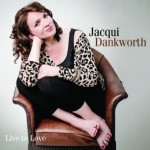 While Jacqui Dankworth’s first album, It Happens Quietly, was standard songbook fare, this second effort skirts more around pop, soul and salsa than jazz. It’s mostly made up of originals from Dankworth, husband/pianist Charlie Wood and producer/bassist Geoff Gascoyne, though there are a couple of covers here too from the likes of Shorter and Mercer. There’s also a fun re-rendering of a tune written by her late father, John Dankworth (It’s Tomorrow’s World).
While Jacqui Dankworth’s first album, It Happens Quietly, was standard songbook fare, this second effort skirts more around pop, soul and salsa than jazz. It’s mostly made up of originals from Dankworth, husband/pianist Charlie Wood and producer/bassist Geoff Gascoyne, though there are a couple of covers here too from the likes of Shorter and Mercer. There’s also a fun re-rendering of a tune written by her late father, John Dankworth (It’s Tomorrow’s World).
Ms Dankworth’s vocals are lullaby-like, with round, weighty vowel sounds and the impeccable sibilance of a seasoned theatre performer. Many of the songs here are lightweight, easy to listen to – but somewhat sober. It’s only with the sixth track (Simple As) that we get a taste of Dankworth’s ability to swing: there’s a dash more conviction and humour here, and some nice, gentle glissando.
The album is also pepped up by a light and spritely rendition of Something’s Gotta Give: with just a vocal, bass and some finger-clicking, this standout track is refreshingly sparse.
Book review: Late Life Jazz – The Life And Career of Rosemary Clooney
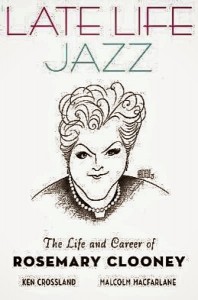 by Ken Crossland and Malcolm MacFarlane. Oxford University Press, hardback, 323pp. ISBN 978-0-19-979857-5
by Ken Crossland and Malcolm MacFarlane. Oxford University Press, hardback, 323pp. ISBN 978-0-19-979857-5
For fans of Rosemary Clooney, who will have already read about her life in her own words (This For Remembrance (1977) and Girl Singer (1999)), this book – which covers Ms. Clooney’s “rise, fall, and final triumph” – will hold no new surprises. But as a scrupulous and comprehensive biography of the singer’s life and career, it is unlikely to be bettered.
In a popular sense, Ms. Clooney is probably best known as the singer of a few novelty hits in the 50s (Come On-A My House, Mambo Italiano) and as the aunt to George, one of the most successful living film stars. Lamentable, say the authors (and I’d agree) – and so they have set out here to tell the true story of “one of America’s finest singers”.
Published by Oxford University Press and clad in a handsome hardback cover, what is immediately apparent here is that the authors haven’t skimped on research. The text is rife with concert dates, tour dates, places and times; it presents as a historical record of Ms. Clooney’s life. Beginning with her great-grandparents’ arrival in Kentucky as Irish immigrants in 1862, up to her death in 2002, the reader is given an objective and detailed account of Rosemary Clooney’s beginning, middle and end.
That’s not to say we are only given cold, clinical facts here; this is a warm, affectionate memoir from authors who clearly admire Ms. Clooney deeply as a musician, actress and person. It is peppered throughout with sardonic quotes from the lady herself, displaying her acerbic wit, and contributions from the family and friends who knew her best as well as the musicians she worked with, including lifelong friend Bing Crosby.
The reader is also treated to a collection of photographs from Ms. Clooney’s life, including childhood snaps, family photos, early publicity stills and candid performance shots. The last pages of the book are dedicated to three Appendices that go some way to show how thoroughly the work was researched: a detailed discography from 1946-2001, a list of all her TV appearances, and a selected chronology.
The authors’ introduction sets out their aim to “offer a definitive chronicle and critical appraisal of the life and career of a remarkable lady”, and this they have certainly achieved. For the devoted Rosemary Clooney fan and jazz scholar alike, or indeed any reader interested in the story of this singular singer, there is plenty to feast on here.
Harry Connick, Jr.: Every Man Should Know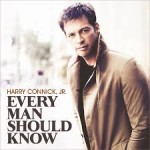
Best known for his understated jazz standard soundtrack to 1989 movie When Harry Met Sally, this album sees Connick, Jr. take an introspective turn. His vocals are still rich with that Sinatra-esque timbre, but the material here is rather staid and lightweight. With the exception of Being Alone featuring Wynton Marsalis, the tracks meander vaguely in the direction of jazz-pop, though Greatest Love Story turns out to be a no-holds-barred country romp. All songs on the album are composed by Connick, Jr., though unfortunately that means a little more navel-gazing than some listeners may like.
Ella Fitzgerald: Live In Stockholm 1957
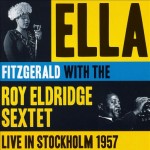 Here are arguably some of the best recordings in existence of Ella’s vocal ability. At the acme of her form in 1957, this concert includes some of the best live versions Ella ever performed of I Can’t Give You Anything But Love and April In Paris. Throughout, Ella’s vocal is strident, watertight; her dead-on Louis Armstrong and Rose Murphy impressions are as funny today as they clearly were to the tickled audience at the Konserthuset, Stockholm in 1957.
Here are arguably some of the best recordings in existence of Ella’s vocal ability. At the acme of her form in 1957, this concert includes some of the best live versions Ella ever performed of I Can’t Give You Anything But Love and April In Paris. Throughout, Ella’s vocal is strident, watertight; her dead-on Louis Armstrong and Rose Murphy impressions are as funny today as they clearly were to the tickled audience at the Konserthuset, Stockholm in 1957.
Ella in fact doesn’t make an appearance until track 7 (Singing The Blues), with the first six songs performed by the Roy Eldridge Sextet alone. There’s a stonking drum solo from Jo Jones in Lester Leaps In and a restrained violin rendition of Moonlight In Vermont by Stuff Smith to whet our appetites before Ella takes the stage.
As well as an exemplar of live vocal performance, the concert also showcases the genuine symbiosis between Ella and the musicians backing her: Tenderly, for example, sees her subtly shift to a samba rhythm, with Jo Jones switching to brushes and the band effortlessly following. The entire album crackles with the heat of the faultless band and the audience’s audible enjoyment.
Laura Ainsworth: Necessary Evil
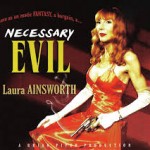 This second album from Texas songstress Laura Ainsworth showcases the singer’s love of oldie-but-goodie jazz, with the track listing comprising a fair sprinkling of Arlen, Mercer and Hammerstein. Originally gaining popularity on US radio for her parody songs (e.g. Santa Baby (Help Me Through Recession Tonight), Ainsworth likewise handles these tunes with wit and levity.
This second album from Texas songstress Laura Ainsworth showcases the singer’s love of oldie-but-goodie jazz, with the track listing comprising a fair sprinkling of Arlen, Mercer and Hammerstein. Originally gaining popularity on US radio for her parody songs (e.g. Santa Baby (Help Me Through Recession Tonight), Ainsworth likewise handles these tunes with wit and levity.
The daughter of Bill Ainsworth, once a member of the Tommy Dorsey Orchestra who backed the likes of Ella and Sinatra, Ainsworth appears to have long been in the thrall of a good old-fashioned love song. She possesses sparklingly clear diction and a throaty, rather wry vibrato, though her higher notes hit more of a choral trill.
There’s a feeling throughout of dress-up and theatre, with Ainsworth ostensibly revelling in the part of the sassy, satin-gowned songbird. It’s all a little bit cabaret, but with a knowing smile; the last track (Last Train To Mercerville) is particularly fun, with each lyric a nod to a different Mercer song title.
Tossia Corman: Up The Hills
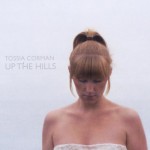 This first outing for singer and composer Tossia Corman is along the lines of jazz pop, with catchy percussive rhythms and plenty of attitude. Originally from Düsseldorf, Corman moved to Amsterdam where she met the band who back her on this album. The ten songs are mostly Corman’s own compositions, with a couple of unorthodox covers (Dig by Incubus).
This first outing for singer and composer Tossia Corman is along the lines of jazz pop, with catchy percussive rhythms and plenty of attitude. Originally from Düsseldorf, Corman moved to Amsterdam where she met the band who back her on this album. The ten songs are mostly Corman’s own compositions, with a couple of unorthodox covers (Dig by Incubus).
Corman’s backing band are crisp and modern, with the taut trumpet/sax duets from Reinsch and Kleinlosen in particular providing a solid foundation for the other players to build around.
There’s more than a nod in the direction of Amy Winehouse in Corman’s style – a similar sort of brash unselfconsciousness and slightly lazy diction particularly characterise the more up-tempo tracks like Longing. A pleasingly grainy lower register is the singer’s strongest asset, offsetting a sound that’s a little rough around the edges.
Caro Josée: Turning Point
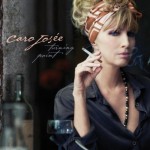 Recording simply as ‘Caro’, Josée put out six studio albums from the 1970s onwards, and received the German Up and Coming National Pop Artist award in 1978. This album comes after a career break and is the first with her new band.
Recording simply as ‘Caro’, Josée put out six studio albums from the 1970s onwards, and received the German Up and Coming National Pop Artist award in 1978. This album comes after a career break and is the first with her new band.
There’s plenty to feast on here with an enthusiastic ensemble playing a mix of styles, from flamenco and gypsy guitar to romping drums and muted trumpets. Josée’s voice is breathy and rather unique – sparing on vibrato, she switches from pinched staccatos to long, drawling notes with ease.
The album is made up entirely of Josée’s own compositions except It’s Impossible, with many of her themes exploring nostalgia (“nights down the bebop bar” in Paris) with an infectious wistfulness. Bouillabaisse is particularly good fun, running at a pace through Josée’s own recipe for the dish (which is also printed in the liner notes for those wishing to try it themselves).
Cathrine Legardh: Love Still Wears A Smile
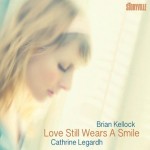 An album made up purely of vocal/piano duets, Danish singer Cathrine Legardh here teams up with Scottish pianist Brian Kellock to create a set of 11 songs (plus one “secret” track sneaked onto the end) that are by turns raucous and romping, then soft and ethereal.
An album made up purely of vocal/piano duets, Danish singer Cathrine Legardh here teams up with Scottish pianist Brian Kellock to create a set of 11 songs (plus one “secret” track sneaked onto the end) that are by turns raucous and romping, then soft and ethereal.
The track listing is jazz standards, but not the usual crop: the lesser-known Gershwin/Weill This Is New for example, and Bernice Petkere’s Close Your Eyes overhauled with some forceful, driving piano lines from Kellock. Piano arrangements throughout are loose and spacious, with Kellock pulling apart the melody then kneading and moulding it back into shape. Legardh’s vocals are layered lackadaisically over this, with her equally somewhat disjointed phrasing.
Legardh’s accented delivery oscillates between haunting and wistful (the opening to First Song) and punchy and dramatic (No Moon At All); her vocals run the full gamut from straight singing through speaking, whispering, giggling and even groaning on some tracks. This is Legardh’s fourth release, and the first with Kellock (who has also recently played with Tommy Smith and Liane Carroll), but their chemistry is clear.
Susanne Abbuehl: The Gift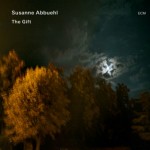
The third release from Swiss vocalist and composer Susanne Abbuehl is a study of the symbiotic nature of words and music. Each track (with the exception of Soon) is made up of poetry by Emily Dickinson, Emily Brontë and others set to music composed by Abbuehl. The resulting compositions are sparse, experimental soundscapes, perfectly combining Abbuehl’s muted, understated vocal with Matthieu Michel’s expressive, exploratory flugelhorn. It’s a thoughtful, reflective album, conjuring up a series of flavours and colours (like poetry) that are left to the listener to interpret.
Carmen McRae: Sings Lover Man/Sings Dave Brubeck’s Compositions
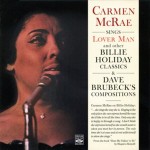 This reissue of two albums of covers by Carmen McRae provides a contrast between two of the singer’s greatest influences: her idol, Billie Holiday, and her friend, Dave Brubeck. Sings Lover Man is a salute to McRae’s mentor, who died two years prior to this album’s release in 1961. Songs like Them There Eyes and Yesterdays openly acknowledge Lady Day’s influence but are nevertheless imbued with McRae’s own style.
This reissue of two albums of covers by Carmen McRae provides a contrast between two of the singer’s greatest influences: her idol, Billie Holiday, and her friend, Dave Brubeck. Sings Lover Man is a salute to McRae’s mentor, who died two years prior to this album’s release in 1961. Songs like Them There Eyes and Yesterdays openly acknowledge Lady Day’s influence but are nevertheless imbued with McRae’s own style.
At the time these tribute sessions were recorded, McRae’s band (featuring Eddie ‘Lockjaw’ Davis on tenor sax) also recorded a couple of unrelated tunes, including an incongruous but enjoyable take on Tormé’s Christmas Song, included here as a bonus track.
McRae’s collaboration with Brubeck on Sings Dave Brubeck is a joy; the lyrical version of Take Five is particularly worthwhile, with McRae using her lower register to great effect and Paul Desmond on good form. Strange Meadowlark, originally an instrumental with lyrics added by Brubeck’s wife, Iola, features a complicated note structure that McRae delivers with signature aplomb. There is also a fun dialogue between McRae and drummer Joe Morello in Paradiddle Joe, and a wry look at music critics in Good Reviews, featuring Louis Armstrong and Trummy Young.
Both albums display not just a singer but a study. McRae clearly gave the music of these two jazz greats measured attention and thought, and the result reflects the significance of both Holiday and Brubeck’s music, as well as that of McRae herself.
Billie Poole: Sermonette/Confessin’ The Blues
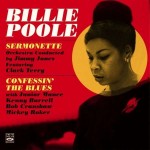 For blues fans who ever wondered what happened to this singer from California who seemed to receive so little notoriety in her lifetime, this reissue of the two albums Billie Poole (1929-2005) recorded in 1962 will be warmly welcomed. Having gained some recognition for her ability in Paris in the early sixties, Poole was then signed to Riverside to release Sermonette and Confessin’ The Blues, but after that, details of this vocalist’s career become hazy.
For blues fans who ever wondered what happened to this singer from California who seemed to receive so little notoriety in her lifetime, this reissue of the two albums Billie Poole (1929-2005) recorded in 1962 will be warmly welcomed. Having gained some recognition for her ability in Paris in the early sixties, Poole was then signed to Riverside to release Sermonette and Confessin’ The Blues, but after that, details of this vocalist’s career become hazy.
Nevertheless, here are two albums of enjoyably raw, authentic blues. Poole reveals herself as a sensitive interpreter of blues material, including songs by Bessie Smith (Jailhouse Blues, Young Woman’s Blues) and Ray Charles (Ain’t That Love?). Comparisons in vocal delivery between Poole and Bessie Smith are easy to make, and the influences of gospel (Sister Rosetta Tharpe is brought to mind) and the early blues shouters are also evident, but Poole herself cites Dinah Washington as her closest influence.
There’s a clear decision on these sets, though, to offset the grittier blues feel with popular standards to appeal to a wider audience, and herein lies the album’s weakness; I Could Have Danced All Night in particular seems an odd and misguided choice. Poole is at her best in the intimate quartet setting of Confessin’ The Blues, where driving guitar and raunchy piano do justice to the depth and warmth of her voice.
Joanie Sommers: Positively The Most!/The “Voice Of The Sixties”/For Those Who Think Young
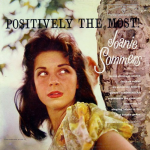 For any fan of female vocals, this comprehensive collection of recordings from the singer touted as the ‘voice of the sixties’ will come as a genuine treat. Combining three albums Warner Bros. put out in the early sixties, these songs display a clearly talented young singer (just 18 at the time of recording).
For any fan of female vocals, this comprehensive collection of recordings from the singer touted as the ‘voice of the sixties’ will come as a genuine treat. Combining three albums Warner Bros. put out in the early sixties, these songs display a clearly talented young singer (just 18 at the time of recording).
Sommers’ style is characterised by a gamine, girl-next-door, Doris Day-like trilling vibrato; she’s all fresh-faced innocence, summed up in the playfully delivered “Golly-golly-golly gee” lyric in her excellently peppy version of I Like The Likes Of You. Her vocals are assured, effortless and warm with humour, and are complemented well on these three albums by a series of full and swinging orchestras.
A shame, then, that her career highlights appear to have been an uncharacteristic pop hit, Johnny Get Angry (1962), and a popular ad campaign for Pepsi (the slogan for which spawned the third album title on this disc), after which she largely retired from the public eye.
Sommers’ vocal joie de vivre is combined with a slight huskiness, particularly evident in her readings of ballads, which together make for that rare quality in a singer where every note is a pleasure to listen to. Perhaps her earnest, unremittingly positive take on standards like Aren’t You Glad You’re You may get old after a while, but this listener is still enchanted. Unreservedly recommended.
Jana Herzen: Passion Of A Lonely Heart
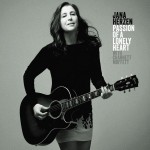 Having created her own record label, Motéma, in 2003, Jana Herzen has until now concentrated on furthering the musical aspirations of others rather than her own. After some cajoling from friends to release her own material, this is the result. Herzen possesses a deft vocal instrument; her performances are unadorned and understated, with clear authenticity. The stripped-back vocal-bass arrangements are taut and precise, with a rhythmic, Latin feel (particularly the Corea composition, Spain). Her own compositions are personal and unpretentious, with an appealing directness. Refreshingly simple.
Having created her own record label, Motéma, in 2003, Jana Herzen has until now concentrated on furthering the musical aspirations of others rather than her own. After some cajoling from friends to release her own material, this is the result. Herzen possesses a deft vocal instrument; her performances are unadorned and understated, with clear authenticity. The stripped-back vocal-bass arrangements are taut and precise, with a rhythmic, Latin feel (particularly the Corea composition, Spain). Her own compositions are personal and unpretentious, with an appealing directness. Refreshingly simple.
Nina Simone: Empress Live!
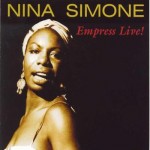 As Nina Simone albums go there are doubtless better examples of the “High Priestess of Soul” singing live than this one. Empress Live! nevertheless presents some of the most memorable elements of Simone’s style: vocals that shapeshift from growling remonstration (Mississippi Goddamn) to playful mischief (My Baby Just Cares); her extended classically influenced piano solos.
As Nina Simone albums go there are doubtless better examples of the “High Priestess of Soul” singing live than this one. Empress Live! nevertheless presents some of the most memorable elements of Simone’s style: vocals that shapeshift from growling remonstration (Mississippi Goddamn) to playful mischief (My Baby Just Cares); her extended classically influenced piano solos.
The 13 live tracks are taken from Simone’s 1985 World Tour while in the south of France and the Caribbean, and were previously released as Live and Kickin’ in Europe and the Caribbean. Unfortunately there’s a conspicuous lack of liner notes to fill in any more of the background, and no credits are given for Simone’s band.
Many of Simone’s own compositions make up this collection, and throughout she interacts warmly with her appreciative audience. It’s not her own songs that get the loudest applause, however; I Loves You Porgy in particular is an obviously popular choice. My Baby Just Cares For Me takes a humorous turn when Simone stops singing halfway through and scolds the audience for not singing loudly enough, before starting the song all over again.
Johnny Mercer: Music Shop IV
 Following on from Mercer’s Music Shop III, this fourth edition is likewise a nostalgic trip back in time to the lyricist/singer’s heyday in the 1940s, with these programmes going out on the Armed Forces airwaves during the Second World War. With 32 tracks from five ‘Music Shop’ radio shows, there’s plenty of tenderly sung ballads from guest Jo Stafford, corny (shucks!) Western pastiche from guest Roy Rogers (Cowpoke Polka, I’m An Old Cowhand), and genial chat from the indefatigable compère.
Following on from Mercer’s Music Shop III, this fourth edition is likewise a nostalgic trip back in time to the lyricist/singer’s heyday in the 1940s, with these programmes going out on the Armed Forces airwaves during the Second World War. With 32 tracks from five ‘Music Shop’ radio shows, there’s plenty of tenderly sung ballads from guest Jo Stafford, corny (shucks!) Western pastiche from guest Roy Rogers (Cowpoke Polka, I’m An Old Cowhand), and genial chat from the indefatigable compère.
As with Music Shop III, Jo Stafford’s performances provide relief from the sometimes exhausting antics of Mercer and his pals; her moody interpretations of Together and Out Of This World are especially appealing. The Pied Pipers’ Dream, the closing theme to each programme, also has a distinctly soothing effect; conjuring up images of wartime listeners lulled into comfort by the refrain: “things never are as bad as they seem”.
It’s the kind of music to be listened to leaning in close to the wireless – or failing that, the stereo, CD player, or computer.
Johnny Mercer: Music Shop III
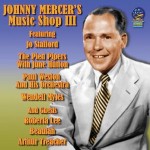 This collection of recordings from Johnny Mercer’s radio show ‘The Music Shop’, broadcast on the Armed Forces Radio Service in the early 1940s, is nothing short of a veritable nostalgia feast.
This collection of recordings from Johnny Mercer’s radio show ‘The Music Shop’, broadcast on the Armed Forces Radio Service in the early 1940s, is nothing short of a veritable nostalgia feast.
Mercer presents the programme with all the gusto and Southern-gent affability he was known for. Songs are introduced and often interrupted midway for a joke with the audience, but carried off with charm. There is much vaudeville back-and-forth banter between Mercer and his various guests, including a somewhat questionable exchange between him and ‘kitchen maid’ Beulah.
Lending a measure of sophistication when proceedings begin to border on slapstick is Jo Stafford, whose delivery of I’ll Be Seeing You carries a refreshing vulnerability. There’s also a rousing version of Singing In The Rain, which even by then was an ‘old favourite’.
There is much to enjoy in these 28 tracks for those with a soft spot for 1940s all-American optimism and the big band/vocal sounds of that era. Crackly recordings, tight barbershop-like harmonies and trilling Jolson vibratos from Mercer make for a bumper set of hammy but relentlessly cheery wartime tunes.
Book review: Benny Goodman’s Famous 1938 Carnegie Hall Jazz Concert
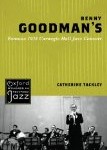 by Catherine Tackley. Oxford Studies in Recorded Jazz, Oxford University Press, paperback, 223pp. ISBN 978-0-19-539831-1
by Catherine Tackley. Oxford Studies in Recorded Jazz, Oxford University Press, paperback, 223pp. ISBN 978-0-19-539831-1
Part of OUP’s Oxford Studies in Recorded Jazz series, which includes titles on Jarrett’s Köln Concert and Miles Davis’ studio output, this book attempts to place Goodman’s seminal 1938 Carnegie Hall performance within its proper historical and cultural context. Series Editor Jeremy Barham describes these titles as aiming to “renew musical debate in jazz scholarship”, and this book is clearly a thoroughly researched, scholarly work.
The blurb declares it “a must-read for all serious jazz fans”, and this seems a fair estimation if “serious” means to be particularly interested in the intellectual study of jazz theory and history. The book is by no means a light read, dense as it is with some quite technical descriptions of the precise notes themselves that were performed at the eponymous concert. Those looking for a broader précis of Goodman’s music and why this concert in particular was historically significant may be put off by the sometimes jargon-heavy narrative of this “Oxford study”.
The author Catherine Tackley, a clarinettist and band leader herself, uses the 1950 Colombia recording, The Famous 1938 Carnegie Hall Jazz Concert, as the basis for her study. The detailed analysis of the musical recordings on this album is supplemented by consideration of “the concert as an event in itself … and the ensuing reception and responses”, as well as the context of the concert in terms of time and place in the course of 20th-century jazz. Tackley acknowledges that existing scholarly works on Goodman are surprisingly lacking, and so hopes her book “sheds new light on the performances of Benny Goodman”.
Although dense, this is a relatively slim volume, with three parts covering “Context”, “Performance” and “Representation”. There are also appendices listing the Carnegie Hall program and members of the orchestra, and a detailed discography. A few monochrome images add interest to the piece, and the author favours frequent representations of transcribed scores to illustrate her arguments, but on the whole this is a mostly textual affair. For students of jazz history and those interested in the Goodman swing era, this will be a welcome addition to the genre.
Duke Ellington: Ellington Jazz Party
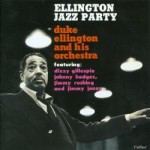 This short and sweet reissue of a 1959 record showcases some of the most innovative musicians of the day, including Dizzy Gillespie, Johnny Hodges and of course the Duke himself. The aptly named “Jazz Party” is a semi-impromptu set; originally planning to record a couple of his latest compositions, the arrival of a few of Ellington’s friends turned it into a celebration of all things big band.
This short and sweet reissue of a 1959 record showcases some of the most innovative musicians of the day, including Dizzy Gillespie, Johnny Hodges and of course the Duke himself. The aptly named “Jazz Party” is a semi-impromptu set; originally planning to record a couple of his latest compositions, the arrival of a few of Ellington’s friends turned it into a celebration of all things big band.
Throughout, the mood is perceptibly warm with a touch of mischief: syncopated percussion wrestles time signatures with the brass section on Malletoba Spank; fluttering piano flirts with an excellent sax solo from Paul Gonsalves on Ready, Go!. Duke’s sense of humour is evident too in his choice of song names – take, for example, his Toot Suite and the tongue-twisting Tymperturbably Blue.
Liner notes are extensive and rather poetic from Rafi Zabor, though we disagree on one point: while Zabor finds that Satin Doll “may have outworn its charm sometime in the last century”, it’s my favourite track on the album. Tumbling drums spark off the sudden shout of trumpets amid rumbling trombones; it’s full of the laidback charm Duke became known for throughout his career.
Kendra Lou: To The End Of The World
 This punchy and eccentric album from Danish-born vocalist Kendra Lou is a somewhat bizarre mix of compositions and covers – from tongue-in-cheek cannibalism (Sexy Dish) to suicidal secretaries (The Secretary Song), with some Tom Waits and a couple of standards thrown in for good measure.
This punchy and eccentric album from Danish-born vocalist Kendra Lou is a somewhat bizarre mix of compositions and covers – from tongue-in-cheek cannibalism (Sexy Dish) to suicidal secretaries (The Secretary Song), with some Tom Waits and a couple of standards thrown in for good measure.
At first hearing Madeleine Peyroux is unmistakeably brought to mind: Lou evokes the same soft, purring sensuality. Her diction, however, is not as sharp as the French singer’s, and there’s less subtlety about her delivery.
It’s quirky jazz-pop, and as cool and contemporary as they come. The laidback beat of compositions like To The End Of The World are reminiscent of the likes of Katie Melua and Jamie Cullum, but it’s Lou’s standards covers that seem to have more about them. The overdone Black Coffee sounds unexpectedly fresh, with muted trumpets recalling Peggy Lee’s classic version.
Chris McNulty: The Song That Sings You Here
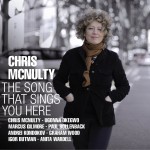 This latest album from Australian-born singer and composer Chris McNulty is a set of eight standards, with two of McNulty’s original compositions making up the final tracks. Letter to Marta – composed by McNulty after recalling a melody long forgotten – is particularly demonstrative of the singer’s consummate skill both as composer and vocalist, also featuring a mesmerising piano sequence from Andrei Kondokov.
This latest album from Australian-born singer and composer Chris McNulty is a set of eight standards, with two of McNulty’s original compositions making up the final tracks. Letter to Marta – composed by McNulty after recalling a melody long forgotten – is particularly demonstrative of the singer’s consummate skill both as composer and vocalist, also featuring a mesmerising piano sequence from Andrei Kondokov.
Many of the songs here can be read like extended improvisational dialogues between singer and saxophone, singer and piano, and so on. Jitterbug Waltz is particularly appealing in this respect, with McNulty’s vocals standing like a flirtatious invitation to the listener at each instrumental break. On all the tracks, McNulty’s signature vocal steps up and down the scales mean that one note is rarely sung as just one note. This lends a shimmering fragility to the otherwise occasional toughness of her vocal.
McNulty’s vocal style isn’t to everyone’s tastes, and I personally sometimes find her flights of vocalese a little superficial; but you can’t fault her for pure emotion and her utter devotion to every song she sings. This is cool, sophisticated jazz from a professional who clearly knows her way around a tune – who knows her limits, but constantly and successfully goes beyond them.
Marlene VerPlanck at Ronnie Scott’s, March 2013
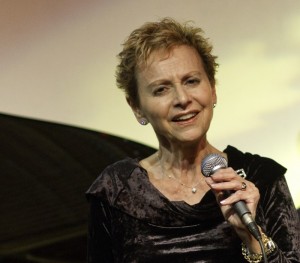 Considering the scope and longevity of Ms VerPlanck’s career, it’s hard to believe that she could still be singing with such verve, warmth, and indubitable sincerity. Yet her lunchtime concert at Ronnie Scott’s on Sunday 17 March, part of her annual UK spring tour, was undeniable proof that this lady still swings.
Considering the scope and longevity of Ms VerPlanck’s career, it’s hard to believe that she could still be singing with such verve, warmth, and indubitable sincerity. Yet her lunchtime concert at Ronnie Scott’s on Sunday 17 March, part of her annual UK spring tour, was undeniable proof that this lady still swings.
Supported by her excellent UK trio (Paul Morgan on bass, John Pearce on piano, Bobby Worth on drums), Ms VerPlanck delivered a set characterised by her signature audience rapport and deep, personal connection with every song she sang – which included her mix of well-known and lesser-known standards. It was a wet, grey afternoon in London and it seemed the audience – making up a full house – had huddled inside the cosy club against the lingering winter chill. And if it was warmth they were looking for, that’s what they got.
From the opening number to the encore, Ms VerPlanck’s set was made up of songs with a central theme – the youthful optimism of a first love. It’s a theme that could easily stray into trite or corny waters, but not in Ms VerPlanck’s hands. Although she has been recording since 1955 and is – incredibly – approaching her eightieth year, each song was sang as if for the first time. Her delivery is indelibly as if each standard – its melody, its lyrics, its message – is a surprise even as she sings it; a gift to be unwrapped lovingly and shared with her rapt audience.
One of her opening numbers, Fun To Be Fooled, an Arlen/Ira Gershwin composition, summed up Ms VerPlanck’s way with a tune: a spritely sense of mischief (“fun to be kissed!”), and a completely convincing engagement with the lyric (“fun to exist!”). Jerome Kern’s Let’s Begin was similarly handled, with the teasing lyric “which is it going to be – love or gin?” eliciting appreciative chuckles from the audience. Another appealing feature of Marlene VerPlanck’s shows is her inclusion of the often-neglected verse before as the song’s main refrain; a particular example in this set being Embraceable You, whose rarely performed verse colours the song to make it feel fresh and new.
The majority of the set was upbeat, with a swinging, toe-tapping tempo, but the couple of mournful ballads were also a treat. Guess I’ll Hang My Tears Out To Dry in particular was an absorbingly sombre performance. The set also contained a couple of songs written by Ms VerPlanck’s late husband, Billy VerPlanck, as well as tunes composed by “those New York piano bar players”, including Murray Grand, who, as Ms VerPlanck wistfully noted, are “now all gone”.
Paul Morgan’s bass work was another thoroughly captivating element of the set, characterised by his striking, strident tone and obvious rapport with the other players. “We’re gonna make him work hard!” Ms VerPlanck declared on the Bernice Petkere number Close Your Eyes, and that he certainly did, with the first few lines of the song performed as a duet between bass and vocal.
The set ended with a thrilling race through the Lerner/Lane composition Come Back To Me, with Ms VerPlanck imbuing the lyric with a desperate, heartfelt urgency: “Blast your hide, hear me call / Must I fight City Hall? / Here and now, damn it all! / Come back to me!”. As with all her performances, Ms VerPlanck scanned the room as she sang, drawing her audience into the lyric; and when she looked in your direction, it was hard not to believe she was singing that lyric directly to you.
Ms VerPlanck has an uncanny ability to catch at the truth of a lyric and make an old song sound new; here’s wishing her many more years of performing.
George Shearing: On The Sunny Side Of The Strip + On Stage
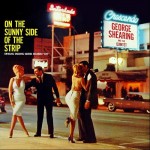 This collection presents two live recordings from George Shearing and his Quintet in 1958; the first at Claremont College, originally released as Shearing on Stage!, the second at the Crescendo Club, Los Angeles, first released as On The Sunny Side Of The Strip. The two sets feature some of Shearing’s best live performances, with collaborator Toots Thielemans featuring here more on guitar than harmonica.
This collection presents two live recordings from George Shearing and his Quintet in 1958; the first at Claremont College, originally released as Shearing on Stage!, the second at the Crescendo Club, Los Angeles, first released as On The Sunny Side Of The Strip. The two sets feature some of Shearing’s best live performances, with collaborator Toots Thielemans featuring here more on guitar than harmonica.
Shearing’s light and purposeful playing is showcased throughout, particularly on The Nearness Of You, where he’s joined just by McKibbon on bass and Brice on drums. A politely appreciative audience chuckle at his asides between numbers (a joke about AC speakers in Washington DC elicits a few groans).
The sets are rather vibraphone-heavy, giving it a slightly dated “lounge” feel; but this is nicely interrupted by Peraza’s upbeat congas on a few of the tracks, particularly Caravan – which also features the only harmonica appearance by Thielemans.
Lovely Rita: Strollin’ Along Abbey Road
 Lovely Rita is a Vienna-based band playing a mixture of avant-garde pop, jazz and electronic music. The sound on this album ranges from darkly anarchic to whimsical, with vocalist Anne Marie Fuerthauer colouring the lyrics by turns bizarre and eerie with her accented, echoed delivery.
Lovely Rita is a Vienna-based band playing a mixture of avant-garde pop, jazz and electronic music. The sound on this album ranges from darkly anarchic to whimsical, with vocalist Anne Marie Fuerthauer colouring the lyrics by turns bizarre and eerie with her accented, echoed delivery.
To celebrate 50 years of the Beatles this year, as well as the band’s own 20th anniversary, this album presents a homage to the Fab Four through the medium of experimental jazz. Each track pays true tribute to the Lennon-McCartney songs by reinventing them and making them the band’s own rather than simply covering them.
Time signatures are pulled apart and chopped around, creating a sound that’s at times almost extra-terrestrial. Instruments – saxophones, trumpets, cymbals – shift from cacophonic to euphonic and back again, supplemented by other novel sounds: the now nostalgic crackle at the start of an LP, for instance, is used as a leitmotif throughout the album, creating links between old and new.
Rocky Raccoon is the stand-out track: beginning with noisy, syncopated saxophones, it resolves itself into a funky, bass-flavoured interpretation of McCartney’s Western pastiche. Day In The Life is similarly satisfying, steadily winding upwards in volume and pitch towards the end in a style reminiscent of the Beatles’ own late 60s experimentations. The album is an eccentric, psychedelic voyage through jazz, funk, electronica and elsewhere, and it’s worth going along for the ride.
Ella Fitzgerald: Wishes You A Swinging Christmas
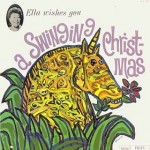 In the season of over-indulgence, it’s easy to have too much of a good thing. Another jazz Christmas album might seem one too many when the genre is already full to bursting. Luckily, no such bloated superfluousness marks this Ella offering, except that we perhaps can do without alternate versions of Frosty The Snowman on the same CD.
In the season of over-indulgence, it’s easy to have too much of a good thing. Another jazz Christmas album might seem one too many when the genre is already full to bursting. Luckily, no such bloated superfluousness marks this Ella offering, except that we perhaps can do without alternate versions of Frosty The Snowman on the same CD.
Wishes You A Swinging Christmas comprises Ella’s first Christmas album of the same name (1960), as well as some bonus tracks from the same sessions and some going back to 1950. With the exception of the Medley it’s a secular, swinging, never-sombre romp through some of the season’s classics. Lyrics are improvised with Ella’s trademark joie de vivre, and the sound throughout is bouncing, frothy and sweet without becoming overly so.
The opener, Jingle Bells, is one of the stand-out tracks, with Ella’s raucous, ludic interpretation setting the tone for the rest of the album. She’s backed throughout by a series of first-class orchestras whose cymbal-crashing and bell-jingling whips up just the right amount of feverish fun.
Rachael MacFarlane: Hayley Sings
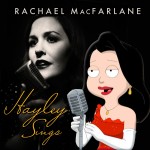 For those not acquainted with US comedy cartoon American Dad!, it might not be immediately obvious why singer Rachael MacFarlane has marketed her debut album under an alter ego named Hayley. In fact MacFarlane is a voice artist more than she is a singer, playing the character of Hayley in the hit show created by her brother Seth (who’s better known for sister US show Family Guy). Rachael MacFarlane’s talent is in creating voices for characters, and she fairly effectively creates the voice of a jazz singer for this album.
For those not acquainted with US comedy cartoon American Dad!, it might not be immediately obvious why singer Rachael MacFarlane has marketed her debut album under an alter ego named Hayley. In fact MacFarlane is a voice artist more than she is a singer, playing the character of Hayley in the hit show created by her brother Seth (who’s better known for sister US show Family Guy). Rachael MacFarlane’s talent is in creating voices for characters, and she fairly effectively creates the voice of a jazz singer for this album.
It’s a rather delightful track listing, with big band standards Makin’ Whoopee! and Sooner or Later sitting comfortably with sixties folk-pop from Paul Simon and Carole King. MacFarlane’s voice shapeshifts through the genres, switching from schmaltzy and affectedly sexy on Makin’ Whoopee! to light and girlish on Feelin’ Groovy with ease.
There’s a pleasing resonance to her lower notes and she handles the material with warmth and grace. Her style is perhaps more reminiscent of Disney songstresses Lea Salonga and Jodi Benson than the jazz greats, and it’s evident she doesn’t believe herself to be batting in the big jazz leagues anyway; but it’s a charmer of an album nonetheless.
Heather Cairncross: At Last
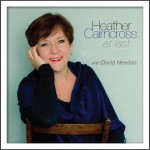 This debut album from singer Heather Cairncross paired with pianist David Newton takes an unusual tack in presenting a full track listing performed by the two musicians alone, with no other accompaniment – and even more unusually, each track was recorded in one take over a couple of days with no studio editing. The result is 14 songs that are stripped back, unpretentious, and unadorned – and it’s a matter of taste whether the listener finds that bold and refreshing or under-produced.
This debut album from singer Heather Cairncross paired with pianist David Newton takes an unusual tack in presenting a full track listing performed by the two musicians alone, with no other accompaniment – and even more unusually, each track was recorded in one take over a couple of days with no studio editing. The result is 14 songs that are stripped back, unpretentious, and unadorned – and it’s a matter of taste whether the listener finds that bold and refreshing or under-produced.
Personally, I found this approach worked better on some songs than others, with ballads like I’m Glad There Is You benefiting from the pared-back effect: pianist David Newton expertly layering the melody around Ms Cairncross’ reading of the lyric.
Newton played and toured with Stacey Kent for many years, and his sensitivity as a sole accompanist is evident throughout. A classically trained singer, Cairncross’ sound is characterised by immaculate diction, an unwaveringly straight tone in long-held notes, and deftly executed glissando. She has been a professional singer for many years, but this is her first eponymous album.
The intention in this album was to showcase the Great American Songbook, and in that I believe they have been successful – even if the strength of the songs themselves sometimes overshadows the actual performances.
Elizabeth Shepherd: Rewind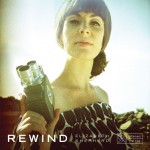
Credited as one of the new-wave jazz singers reinvigorating the music for the next generation of jazz fans, Elizabeth Shepherd certainly strikes the listener as very contemporary, whether interpreting standards from the 1930s or something a little more present-day.
With a voice that’s willowy and weightless, Shepherd is clearly a talented artist: as well as providing vocals, she’s also a gifted pianist, and all the tracks on this album are arranged by her. The songs are fresh, cool and young in Shepherd’s hands, her effortless scatting on Poinciana being particularly memorable, along with one of the funkiest versions of Love For Sale I’ve heard.
Ella Fitzgerald & Louis Armstrong: Porgy & Bess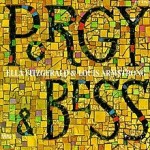
Listening to probably the greatest male-female jazz duo in history perform arguably the most sophisticated work by the Gershwins, you can’t help feeling a stab of regret that George Gershwin died only two years after the ‘folk opera’ flopped at the box office, and as such never saw the historical relevance it would come to assume (not to mention never hearing this Ella-Louis performance, which was recorded 20 years later).
The arrangers have chosen some of the best Porgy-Bess duets from the opera and Ella and Louis of course take on these roles effortlessly; Ella’s voice made vulnerable and plaintive, Louis’ achingly poignant (particularly on Oh Where’s My Bess?). The Medley is dreamlike in its echoey, somewhat chilling arrangement, with Ella’s girlish cry of ‘Strawberries!’ drifting strangely through discordant, syncopated strings.
One of the greatest treats of this reissue, though, is the two bonus tracks tacked on the end, where Ella and Louis riff with each other on a live recording at the Hollywood Bowl in 1956. Everything from Louis’ warmly admiring introduction to Ella, to Ella forgetting the lyrics, to the two of them taking Undecided at breathtaking speed, make for a joyful coda to this album.
Ernestine Anderson: The Complete 1947-1958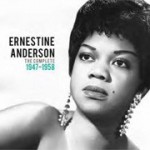
If there’s a satisfactory answer to the mystery of Ernestine Anderson’s relatively low notoriety, I’m yet to hear it. Logically, she should sit among the twentieth century’s great female jazz vocalists (and for those ‘in the know’, she does). But somehow the fame of her peers seems to have eluded her.
Even more significant, then, is the release of this double-CD set charting Anderson’s earlier recordings in the forties and fifties. As an introduction to the singer’s breadth of skill, range and emotional connection, it certainly does the trick.
A couple of the tracks are a little on the hokey side (Square Dance Boogie) but on the whole the content of the album has been sensitively chosen. A comprehensive and colourful booklet charting Anderson’s career is a welcome addition.
There are comparisons to Sarah Vaughan to be made: particularly in her broad, brassy vibrato and sometimes rumbling, thunderous lower register. Dinah Washington too, is apparent, in the commanding, authoritative tone she assumes for some of these songs. But Anderson’s version of Mad About The Boy is refreshingly quite different to Dinah’s.
Her voice is presented variously in orchestral and minimal arrangements, full of vivacious energy on one track and heavy solemnity the next, moving seamlessly through skipping girlish sambas to searing, lachrymose ballads.
There seems a theme of light and heavy across the album, and by extension across Anderson’s vocal style. She sings heavily with an air of forceful authority; notes are held longer than the ear expects, lower notes shudder under their own weight. At the same time her delivery is marked by effortless levity, racing as she does through the one-minute long There Will Never Be Another You. This is an album worth listening to, whether as a first-time Ernestine-listener, or as a long-time appreciater of her talents.
Rodriguez at the London Jazz Festival, November 2012
I first heard about the singer-songwriter Sixto Diaz Rodriguez when a film charting his life, Searching For Sugar Man, was in the news earlier this year. The BBC called him ‘the musician who never knew he was famous’, and I was fascinated by his story. Rodriguez released a couple of albums in the States in the late sixties, but for one reason or another they didn’t take off – despite his sound being at first hearing very much a cross between Bob Dylan and Donovan.
He disappeared into obscurity, working in demolition and gaining a degree in philosophy in his hometown of Detroit. Meanwhile, unknown to him, his albums were gaining in popularity in South Africa, where they took on something of a cult status. Rodriguez was oblivious to his overseas fame.
The rumours in South Africa were that Rodriguez had died many years ago, but two devoted fans were determined to find out if there was any truth to the rumours – and finally managed to track him down in the nineties, which is the subject of Searching For Sugar Man. With the release of the film this year, Rodriguez has been touring worldwide and I was lucky enough to catch him at the Royal Festival Hall, London.
Now 70 years old, Rodriguez was helped onto the stage gingerly while his supporting band took up their places. A frail-looking man, face covered by black hat and dark glasses, he carefully picked up his guitar and faced the audience. But if anyone had been worried that such apparent frailty might mean a below-par performance, those worries were extinguished as soon as he began to strum his guitar and sing, his voice issuing out with a clarity and precision that was something of a surprise.
It seemed much of his fan-base had turned out to London to see Rodriguez: from the moment he stepped onto the stage the crowd were restless with applause and shouts of encouragement. ‘I love you, Rodriguez!’ someone shouted from the back of the auditorium, to which he shyly replied ‘I know it’s just the drinks talking, but I love you too’.
Rodriguez was a quick and humorous performer, responding to one distant heckle from the corner of the room by sidling up to the mic and saying softly: ‘Drive safely’. His songs were interspersed with jokes and warm thanks to the audience for their clear adoration of his music.
The music was uplifting, and the crowd knew every song. The songs that have become his signature tunes now – ‘Sugar Man’, ‘I Wonder’, ‘Establishment Blues’ – were met with rapturous appreciation. There were also a few jazz standards in the mix: ‘Fever’ done slow and smoochy with a searing electric guitar solo from the band’s lead guitarist, prompting many wolf-whistles from the audience. ‘Just One Of Those Things’ was a mellow, almost dark interpretation of the Porter classic, and the song to close the show was ‘Learnin’ The Blues’ – a quiet, softly sung coda to the evening.
When the band left the stage at the end of the set, the crowd were so thunderous in their demands for an encore that Rodriguez returned a few moments later and performed ‘Like A Rolling Stone’, to the delight of everyone present. Everybody was on their feet for this song, dancing and clapping. It was an evening of great music, warm rapport, and an inspiring story of revival for a musician who is now very much centre-stage.
Dee Dee Bridgewater at the London Jazz Festival, November 2012
 Sometimes time, mood, setting and music come together in a particular way so that a certain kind of magic is created. At Ronnie Scott’s, at 11pm on a Saturday night in Soho, with the inestimable Dee Dee Bridgewater and her excellent quartet on stage, that magic existed from the moment the band took up their places and instruments and Dee Dee began to sing.
Sometimes time, mood, setting and music come together in a particular way so that a certain kind of magic is created. At Ronnie Scott’s, at 11pm on a Saturday night in Soho, with the inestimable Dee Dee Bridgewater and her excellent quartet on stage, that magic existed from the moment the band took up their places and instruments and Dee Dee began to sing.
Ms Bridgewater is known as a peerless live performer, and she was certainly electric on this occasion. An incredibly expressive, physical presence on the stage, she transfixed the audience from start to finish – whether standing centre-stage and belting out a thrilling cadenza, or dancing around the platform while the members of her band each took a solo, or chatting girlishly to the audience between songs.
She began slow and soft with ‘The Music Is The Magic’, an Abbey Lincoln composition. This warmed things up for the energetic Latin number ‘Let Me’, which gave the audience their first taste of Dee Dee’s famous scat breaks. These, of course, were exhilarating in their execution: virtuosic flights from the melody that shot skyward before returning safely to earth.
The audience was then brought intimately close for ‘Besame Mucho’. This was a tender, moving rendition; Dee Dee took off her oversized glasses for one of the only times during the performance, and the spotlight lighting up just her face created for a moment an image reminiscent of old Billie Holiday photographs. This was followed by ‘Speak Low’, after which she seemed to sense the audience might be lulled into a dream-like state – “Come on,” she urged her band, “we’ve got to get back up or I’ll fall asleep!”
Dee Dee’s sound throughout the evening was unfailingly arresting: explosive staccato notes mingled easily with notes held long and steady for what felt like entire minutes. Her band was made up of musicians who are each excellent players in their own right: pianist Edsel Gomez, bassist Stefan Lievestro, drummer Kenny Phelps, and trumpeter Theo Croker. Croker in particular was exciting to watch.
The intimate, bluesy numbers were absorbing and Dee Dee delivered them with all the assured flair of a long-time jazz performer. She also clearly enjoyed engaging with the audience, and had an air of mischief about her: taking the bassist’s music away from him while he played the intro to ‘Fine and Mellow’, she returned it to him with a giggle before launching into the lyric. Dee Dee’s devotion to Billie Holiday songs was also on display in ‘Lady Sings The Blues’ and ‘God Bless The Child’.
When it was time for the set to end (with the words from ‘Speak Low’ – ‘too soon, too soon’ – still echoing in our ears), Dee Dee’s manager appeared in the back doorway. Like an errant girl being told it’s time to go to bed, she needed some coaxing to leave the stage, and was still singing away as she walked out the door. A wonderful storyteller and a sublimely stirring performer: a night with Dee Dee Bridgewater is a night to remember.
Susie Arioli: All The Way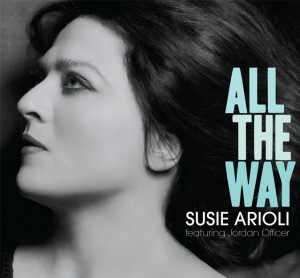
The seventh studio album from this rising Canadian songstress is a feast of what you might term twilight or candlelight jazz. Metronomes, smoochy sax and slow samba drums back a voice that favours the hushed, close-to-the-mic approach. Refrains are whispered like sweet-nothings; notes intoned with lullaby softness – all underscored by a wonderfully resonant lower register.
There are a couple of frothier songs, though, to jolt you awake: Here’s To The Losers being a nice example of whimsical romp, and Looking For A Boy having more than a hint of mischief. My Funny Valentine regrettably adds little to the song’s already full-to-bursting oeuvre, but you can’t fault What A Difference A Day Makes, delivered as it is in agreeable, trotting French.
Though the album on the whole is very straight and down the line, it’s refreshing to hear vocals that don’t feel the need to crowbar unnecessary scat breaks into otherwise fine arrangements in order to be considered ‘jazz’. Arioli has a warm voice that connects emotionally, and she can swing on the up-tempo tracks; that in itself makes the album worth a listen.
Ella Fitzgerald: Sings Ballads For Lovers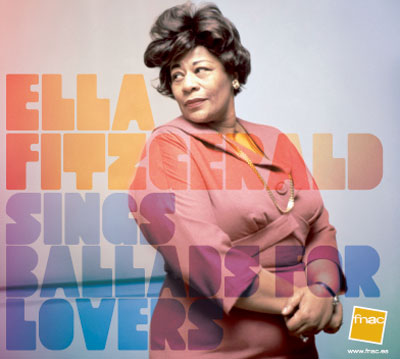
If it’s true you can have too much of a good thing, that’s an axiom that doesn’t apply to this First Lady of Song. Sure, many of the songs on this album will be ones you’ve heard before, whether in a different arrangement or at a different time in Ella’s career. But that somehow detracts nothing from the pleasure of hearing them in this setting. All expertly recorded and produced, all arranged and performed to perfection; these ballads highlight not only some of Ella’s greatest hits, but also some of the greatest songs of the Ellington/Porter/Mercer era.
Each song is delightfully arranged, with Prelude To A Kiss and Sophisticated Lady benefitting from lilting violin solos from Stuff Smith, and Stan Getz and Johnny Hodges featuring on some suitably breathy sax solos. Ella’s vocal sound captured here is crisp and round, and given due prominence by the small-group format (featuring her husband at the time, bassist Ray Brown).
Vocal refrains are delivered with aching nostalgia, exemplified by the echoey brilliance of Midnight Sun, which conjures up more heady atmosphere than a Sunday film noir. Sunday, in fact, is the day to listen to this album; preferably a rainy one. All in all, this is a treat for any fan of truly superb melody.
Beverley Beirne: Seasons Of Love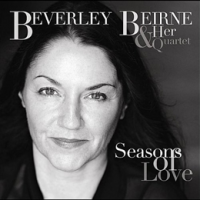
This debut album from Yorkshire-based singer Beverley Beirne exhibits some throaty, soulful vocals, with a solid quartet backing, but retains the indelible mark of the theatre-performer-turned-jazz-singer. This theatrical element is often evident in singers who come to jazz later in their careers, informing their vocal quality as well as their choice of music; this line-up gives a clear nod in the direction of Rodgers and Hammerstein.
Happy Talk is good fun but you sense its conscious ‘jazz interpretation’, where bursts of glissando and melisma seem a little hurriedly thrown on – and despite apparent efforts to the contrary, Juanita Hall’s chatty pidgin original can still be heard.
Still, it’s an enjoyable selection of songs, particularly Devil May Care whose punchy, staccato notes are executed well. Beirne possesses a broad, warm lower register, and her boldly held sustained notes have something of Nina Simone about them. Her quartet back her well with some interesting arrangements; Hearn’s marching interpretation of You And The Night being notable.
Erena Terakubo: New York Attitude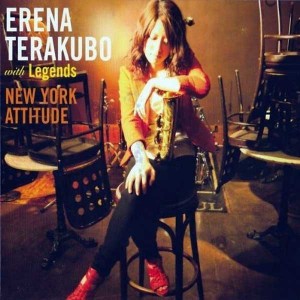
Certainly a talent to watch out for with a promising jazz career ahead of her, Japan-born Erena Terakubo plays alto sax with prodigious skill and control. She displays a very round, very complete sound: by turns breathtaking in its pace, then softly assured (particularly in the wonderfully done Body And Soul).
The album’s full of energy, with no shortage of crashing cymbals and impressive licks from all players. Pianist Kenny Barron, especially, delivers solos with verve and elan, and the album’s titular musician performs with a spirited virtuosity that gives no hint of her young years.
Ira Kaspi: You And The Night And The Music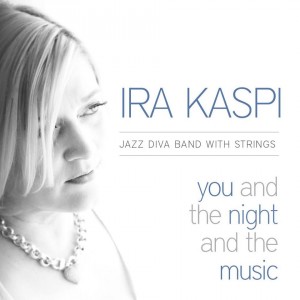
This short, eclectic set from Finnish singer Ira Kaspi is her first outing with a full symphony orchestra, and both orchestra and vocals are given uncharacteristically equal air time. The Lohja City Orchestra produces a full, lush sound, particularly with its string section, which contrasts to some extent with Kaspi’s clipped and dainty voice.
The strength of Kaspi’s vocals is in her rhythm and sense of swing, which she uses to full advantage in numbers like The Best Is Yet To Be Coming (which isn’t, as I thought, a mistranslation of The Best Is Yet To Come; it’s an original written by Kaspi and her partner). Her diction though is a little murky, and a proliferation of odd-sounding glottal stops pepper otherwise clear, straightforward phrasings.
Someday My Prince Will Come is an up-tempo twist on this Disney stalwart, starting with a piquant bass/vocal riff that builds to a run of solos – a welcome lift after the rather plaintive How Do You Keep Up The Light. That Old Devil too is a thrilling flight at a breakneck pace, ending in a smoochy, bluesy coda.
Kaspi’s vocals are a little thin and perhaps leave something to be desired on a few of the tracks here. Nevertheless, she has a knack for striking notes clearly and deliberately to make her voice sound like an instrument: a universally good quality in a jazz singer.
Sophie Milman: In The Moonlight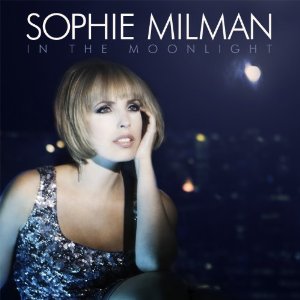
They say you shouldn’t judge a book by its cover, and the same is proved true when it comes to albums with this sixth CD from Sophie Milman. You’d be forgiven for expecting bubblegum pop from the rather sparkly cover, but this in fact belies the singer’s surprisingly warm and full tone.
Nonetheless, it would be stretching an already stretched definition to call it jazz; ‘lite jazz’ would perhaps be more fitting. Tracks such as Moonlight in particular are more in the pop vein.
But Milman benefits from a pleasant purring vibrato, a delicately deft use of glissando, and deliciously crisp sibilance. The overall sound of the album is clean and well produced, and arrangements have an air of playful mischief, particularly Rob Mounsey’s handling of Do It Again.
Like Milman, I’m a devotee of the good old-fashioned love song, and as such I was pleased to hear her doing Till There Was You justice. The Parisian feel of this, brought about by the dreamy accordion, conjures the right level of romance without drifting into sentimentality.
There’s also an ambitious rendition of Prelude To A Kiss, ostensibly inspired by Dee Dee Bridgewater’s interpretation, and Ces Petits Riens is happily served up in immaculate, euphonious French.
Occasionally I hoped she might widen her sound a little, particularly in her higher register which has a tinge of restraint about it, but all in all this is an album that’s very easy on the ear.
Sandra Marlowe: True Blue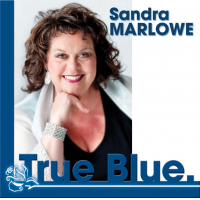
This first album effort from the commanding voice of Sandra Marlowe attempts to place this American singer in the jazz category, where previously I believe she may have fallen more comfortably into ‘showtunes’ (without any of the pejorative sense that sometimes implies) – indeed, her website describes her as a ‘performing artist’, and I think performing is what she does naturally.
Whether that performing element translates well into jazz is a matter of less certainty. The offering here shows us that Marlowe is a powerful singer with a pair of lungs many singers would covet – some notes are held for breath-defying lengths. A subtle flutter of a vibrato tickles the tail-end of her phrasings, and high notes are sustained with precision steadiness.
Unfortunately Marlowe’s penchant for long notes can become rather exhausting on the ear, let alone how they might on the singer’s vocal cords. Some of the arrangements, too, seem a little exhausted: the piano taking on a Hammond-organ-esque sound in Love Dance and Those Eyes makes the album sound more dated than it should.
But the album gets better as it goes along, with the penultimate Spain being the stand-out track; Marlowe’s vocal displays here border on the virtuosic. She’s reminiscent of Diane Schuur in her combination of ballsy attack and girlish gentleness, promising perhaps more from her in the future if she continues down the jazz route.
Stephanie Nakasian: Show Me The Way To Get Out Of This World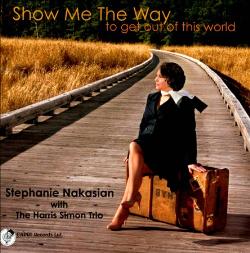
Not having listened to Stephanie Nakasian before, what immediately struck me about her voice is that slightly treatrical quality one is apt to associate with Barbra Streisand. I’d take a guess she’s been classically trained; indeed the overall sound is somewhat ‘by rote’.
Nevertheless her tone is pure, and she takes clear delight in the ‘fun’ songs on the album – Lucky So and So in particular being a display of Ella-inspired scat, with the bonus of a playful Ella-doing-Louis impression at the end. Nica’s Dream is also notable, as Nakasian races through its complicated Latin structure with assured flair.
Barbara Lea: A Woman In Love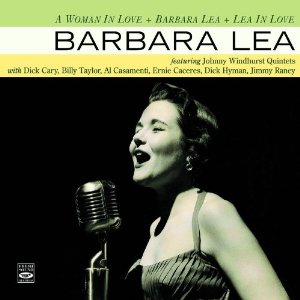
Barbara Lea is a singer you’re unlikely to have heard before. It’s not immediately obvious why this should be – a devotee of jazz standards with a pleasantly throaty vocal sound, her life spanned a considerable chunk of the 20th century (1929-2011) – and yet she never achieved the notoriety of some of her peers.
Presented here is a wealth of Lea’s recordings; tracks are taken from four separate albums spread over two CDs totalling over a hundred minutes of playing time. It’s a showcase of Lea’s solid, understated style.
The album is ‘easy listening’ but in the best sense of the phrase – effortless, casual, pleasant. Lea has an intimate sound with a rather clipped vibrato and a slight huskiness colouring some of her lower register. Julie London’s breathy quality is recalled in Lea; Peggy Lee is also brought to mind. Lea’s A Woman Alone With The Blues is so eerily close to Lee’s version that I’d be interested in finding out which came first.
One of the real stars on this album however is Johnny Windhurst on trumpet, whose every solo is sublimely atmospheric. A slight echo on his mic produces a mellifluous sound that’s at once booming and gentle on the ear; listen out particularly for the swelling horns on The Very Thought Of You, which are quite something.
Standards sit cosily with obscurities on this album (Honey In The Honeycomb being particularly good fun), and all are rendered with equal warmth by Barbara Lea and her multifaceted band.
Bing Crosby: The Jazz Sides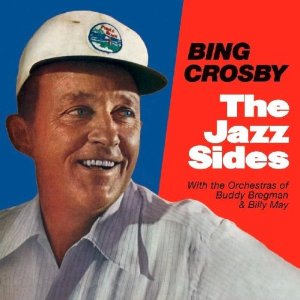
The liner notes to this double-LP album assert somewhat melodramatically that Bing Crosby has been ‘forgotten by the public at large’, which seems a tad extreme. If there’s any truth in it then perhaps these ‘Jazz Sides’, presenting Bing at his ‘swingingest’, might remind the casual listener what this old hand could do.
Crosby’s assured handling of tunes like The Song Is You and I Can’t Get Started here really is a treat, showing that he wasn’t just a saccharine crooner; he could swing, too. The first half of the album with Bregman is a glut of fat, punchy big band sounds: wailing saxes, exuberant drums, trumpets punctuating each refrain.
The second half presents the very agreeable combination of Crosby and Rosemary Clooney, whose voices blended seamlessly on many occasions. Someone had the novel idea of theming these tracks geographically, and the intercontinental excursions do provide plenty of scope for the pair to riff with each other. Immaculate harmonies mix with little ad-libbed exchanges to produce a lightness of touch that’s irrepressible.
Bing’s not the first person you might point to when it comes to great male jazz singers, a sentiment he often echoed, thinking himself more a ‘light comedian’. But his unassailably smooth tone and his infectious humour, showcased well here, are plain. A total, unselfconscious sincerity characterised Bing’s work; his cry of ‘yay!’ halfway through Calcutta seems to sum this up perfectly.
Rosemary Clooney: The Buddy Cole and Nelson Riddle Sessions
The liner notes to this double-LP album proclaim it as ‘a symbol of good modern American music’, a comment that, whether tongue-in-cheek or not (I suspect the latter), sums it up fairly enough. Ms Clooney, epitomising the wholesome girl-next-door with her clear, ringing voice, is presented here on two albums from her late-50s heyday that pay tribute to the good ol’ American song.
Lyrics to all the tracks are included in the liner notes; a welcome extra that seems to have gone out of fashion lately. Clooney’s smooth phrasing and delicate trill of a vibrato is charming throughout, as is her unerring loyalty to the main melody line.
Luckily the presence of the novelty tunes that peppered Clooney’s career is limited here, with Get Me To The Church On Time being the only track bordering on hammy. There are some nice up-tempo, swinging numbers among the staple diet of doleful ballads, with Sing You Sinners and Goody Goody being particularly full of good-natured romp.
The Buddy Cole Trio backing Clooney on Swing Around Rosie, though bass and drums go uncredited, are a team of especially fine players. Cole’s slightly humorous piano arrangements on songs like ‘Deed I Do put the listener in mind of a 1950s funfair, complete with candy floss and popcorn stands. You can’t get much more all-American than that.
Peggy Lee: Blues Cross Country/If You Go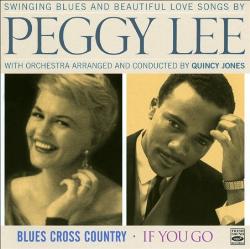
If there’s one thing to say about Peggy Lee, it’s that she had versatility down to a tee. Here are two of her albums where she collaborated with Quincy Jones (as the original liner notes say, that ‘brilliant young arranger/conductor’), and showed off her breadth of skills – from growling blues to breathy ballads.
Jones arranged and conducted all the tracks on these two albums which have been remastered and released as one CD. There’s plenty of Lee’s songwriting abilities on show here too, with seven out of the 12 songs on Blues Cross Country being written or co-written by her.
Blues Cross Country takes us on a trip around the USA from Kansas City to St. Louis, and these songs do tend to get a little samey if listened to without pause. But with nearly all the tracks at less than three minutes, there’s still a sense of pace to them. The second album, If You Go, is the stronger of the two, with Lee showcasing her intimate, hushed vocal style for these 12 nostalgic ballads.
I Get Along Without You Very Well is nicely arranged to a gentle samba beat, and the dreamy flutes and reeds on Say It Isn’t So make this Berlin classic extra hypnotic. As Time Goes By is shamelessly schmaltzy, egged on by soaring strings and saccharine sax. Whether such sentimentality is your thing or not, Lee, helped on by Jones’ unique arrangements, makes these performances unequivocally convincing.
Etta Jones: Don’t Go To Strangers/Something Nice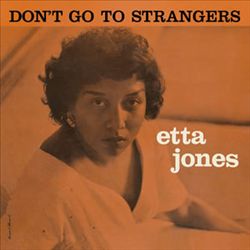
It seems that Etta Jones was somewhat overlooked by the wider public in her lifetime, being often confused with the more popular but vocally inferior Etta James, and too frequently dismissed as a Billie Holiday soundalike. The liner notes on this reissue of Don’t Go To Strangers and Something Nice (together on one CD) can attest to that, with the original Down Beat reviewer in 1961 calling Jones ‘at best…a poor substitute for Billie Holiday’.
Admittedly, Holiday’s influence is particularly stark on tracks such as Fine and Mellow, where Jones seems to be taking the adage ‘imitation is the best form of flattery’ a little too literally. Drawling note transitions and an offbeat handling of the melody are uncomfortably close to Holiday’s style. But to say that Jones is merely a Holiday spin-off would be simplistic, and frankly erroneous.
Listen to I Love Paris to really get what Jones is about. Arranged to a jungle beat and with the tempo really swinging, Jones takes off – managing to get a multiplicity of notes out of a monosyllable, and switching with ease between an open-throated, sonorous sound and a more pinched effect at the edge of her range.
She was often referred to as ‘a musician’s singer’ and you can see why: she uses her voice like a horn, sometimes with bell-like clarity, other times with muted restraint. These two albums show off a voice that has a lot to give, and one that shouldn’t be consigned to jazz history just yet.
Chet Baker Quintet: Conservatorio Cherubini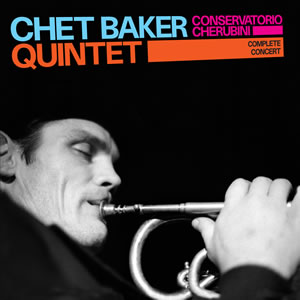
Featuring the complete recording of the concert at Conservatorio Cherubini, Firenze in 1956, plus a whistle-stop tour of various other live sets by Chet Baker and his disparate quintet in New York and Europe in 1955-6, this album represents Baker at the height of his horn and vocal powers. Before the effects of drug addiction really took their toll, here is Chet playing with the vim and verve he was to become famous for.
The nine tracks that make up CD 1 and the beginning of CD 2 are the recordings from the eponymous Conservatorio Cherubini concert, and are an impressive representation of Baker on top form; the liner notes mention that vocal versions of My Funny Valentine and I Cover the Waterfront were also performed but went unrecorded, which you can’t help feeling a pang of regret about. Baker’s vocal reading of You Don’t Know What Love Is here is touchingly poignant, gently sweet, delicately precise. It’s by far the best version of the three on offer on this album; the other two suffering from some sound distortion. The closer to CD 1, This is Always, is a treat: Baker’s vocals shimmer with a tremulous vibrato, colouring notes that are otherwise almost bewilderingly smooth and straight.
Baker’s trumpet-playing throughout is, of course, a knock-out: the exploratory, liberated frenzy of his solos that are nevertheless played with assured command; the delighted fervour in his flights from the melody line. The rapturous audience, particularly on the Conservatorio recordings, shows how much the European and American crowds of the mid-fifties admired Baker and the kind of music he was creating.
The make-up of this album has a somewhat fractured feel – the members of Baker’s accompanying quintet seems to change on every track, and we’re never quite sure if we’re listening in Italy, Germany, Newport or New York – so as an introduction to Chet Baker it’s unlikely to be the best choice. But for seasoned fans of Chet, this album will come as a welcome addition to any collection.
Tierney Sutton Band: American Road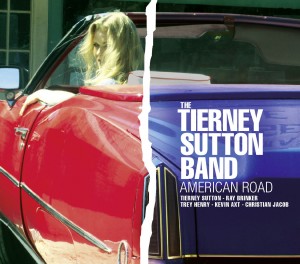
The idea behind this album is to take a selection of well-known American compositions, from traditional folk songs to Hollywood showtunes, and create something new from them. It’s an attempt to bring dated Americana into the 21st century, and in this sense it’s relatively successful. There are obviously some skilled arrangers here, and they’ve done a fair job of giving old songs a new twist.
Christian Jacob (piano) is the one to listen out for; complex note placement and key changes outshine the vocals, and his extended solos at times take on a grandness that’s a clear nod to Gershwin. Funk-flavoured bassline riffs and up-tempo drumbeats inject a fresh if somewhat artificial feel to tracks such as On Broadway.
Vocalist Tierney Sutton calls on the likes of Diana Krall for offbeat inspiration, but her powers fall short of the mark on ‘showcase’ songs like Somewhere and Amazing Grace, which are somewhat anticlimactic. Vocal devices (scat, acciaccatura, melisma) are employed too knowingly, creating an over-engineered, over-rehearsed feel.
Medley tracks such as Oh Shenandoah/The Water is Wide cleverly intertwine the elements of two songs together, creating a haunting quality reminiscent of the old tradition of singing rounds. Complicated Bernstein time signatures in Something’s Coming/Cool are toyed with confidently, producing an interesting if not wholly original effect.
The album blends folk, funk and pop with jazz to create a cross-genre sound that’s an enjoyable, though perhaps not entirely satisfying, salute to the American composer.

